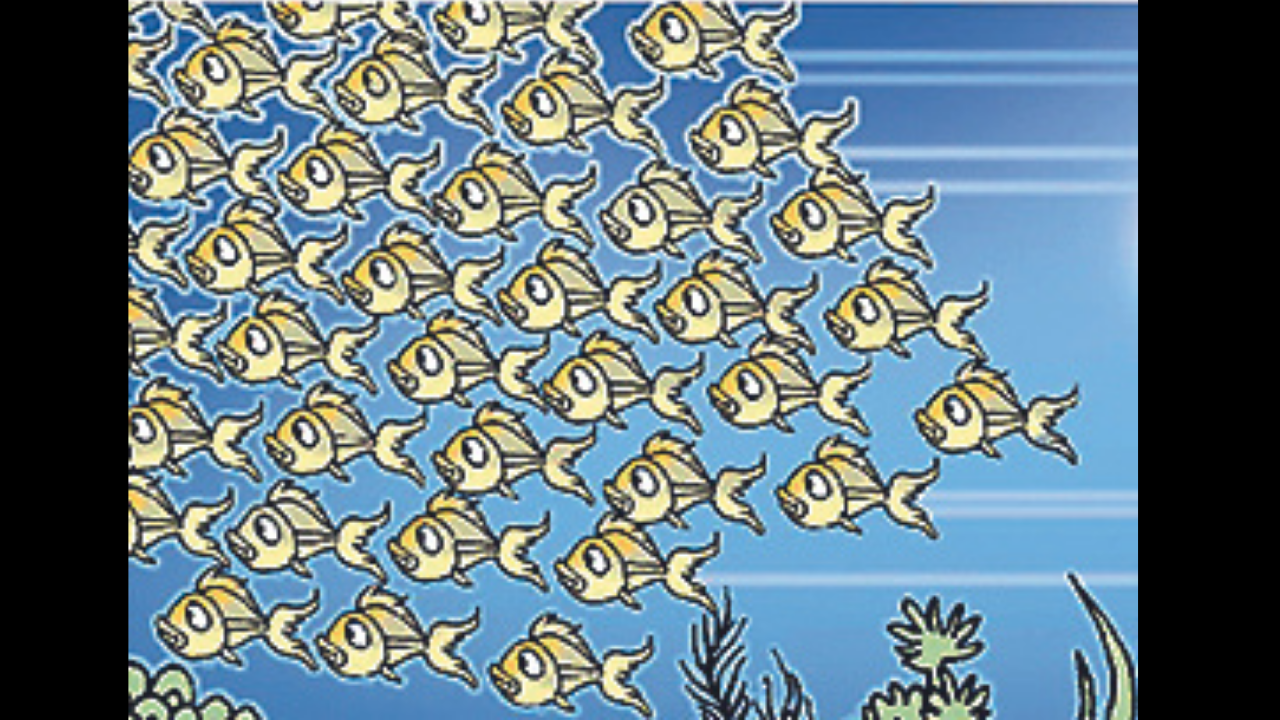
KOLKATA: Fish diversity in the Ganga, which had nearly halved in the last decade of the previous millennium and the first decade of this century, appears to be on the path to recovery, with over 90% species that had become endangered making a comeback following interventions to improve the river's water quality and sensitise fishermen to avoid netting juveniles.
Among the fish species that have revived and are now available in towns along the Ganga include Hilsa, Kajri or Sutri, Vacha, Garua and Morari or Piyali.
Fish diversity studies in the river, conducted over the past five decades, reveal a wave-like curve: 207 species in the inaugural study in 1974, rising to 266 in 1991 before witnessing a precipitous decline to just 140 species in 2012 and then making a smart recovery to 190 in 2021.
The diversity study has been conducted along the main channel of the Ganga, not its tributaries and distributaries.
Officials at the Central Inland Fisheries Research Institute (CIFRI) clarified that the fish species that dropped out of the records did not disappear from the river altogether, but were not in sufficient numbers. These include Pabda, Batashi, Kholshe, Deshi Koi and Deshi Magur.
'Ranching, seed production improve fish population'
In earlier studies, 79 native Gangetic fish species were detected between Kanpur and Farakka. But the present study reported 103 species from there. The lower zone from Farakka to Tribeni in Bengal reported 123 species and freshwater tidal stretch of the river 72 fish species with hilsa and other small fish species, like chella, morari, Gangetic river sprat, Indian river shad dominating.
The improvement in fish diversity and population follows multiple initiatives taken by CIFRI, including ranching and seed production of indigenous Gangetic fish species. Over 47 lakh fingerlings of major Indian carps have been ranched.
Landing data from Ganga ghats showed a rise in fish stocks after ranching. The rise in fish population has helped improve water quality.
Fishermen Purna Patra from Godakhali and Binay Biswas from Tribeni say the catch has increased. "Local varieties that were rarely found in the catch are now being netted," said Biswas.
Farakka region in Bengal recorded 84 fish species, highest in the stretch, indicating congenial riverine environment supporting stable fish population. "In lower Bengal, four exotic species - crocodile fish, bighead carp, grass carp and silver carp - were reported, showing population stability largely due to riverine ecology change," said CIFRI director and project investigator Basanta Kr Das.
The decline between 1991 and 2012, CIFRI scientists said was due to deterioration in the river's water quality because of effluent from civic bodies and industries, and overfishing. ICAR-CIFRI, with other agencies engaged in Ganga Action Plan, rechristened National Mission for Clean Ganga, has managed to stem the decline and revive 50 species. But species like pangasius, pabda catfish, giant river goonch, chitala and silond catfish are less abundant in the river and require more effort.







